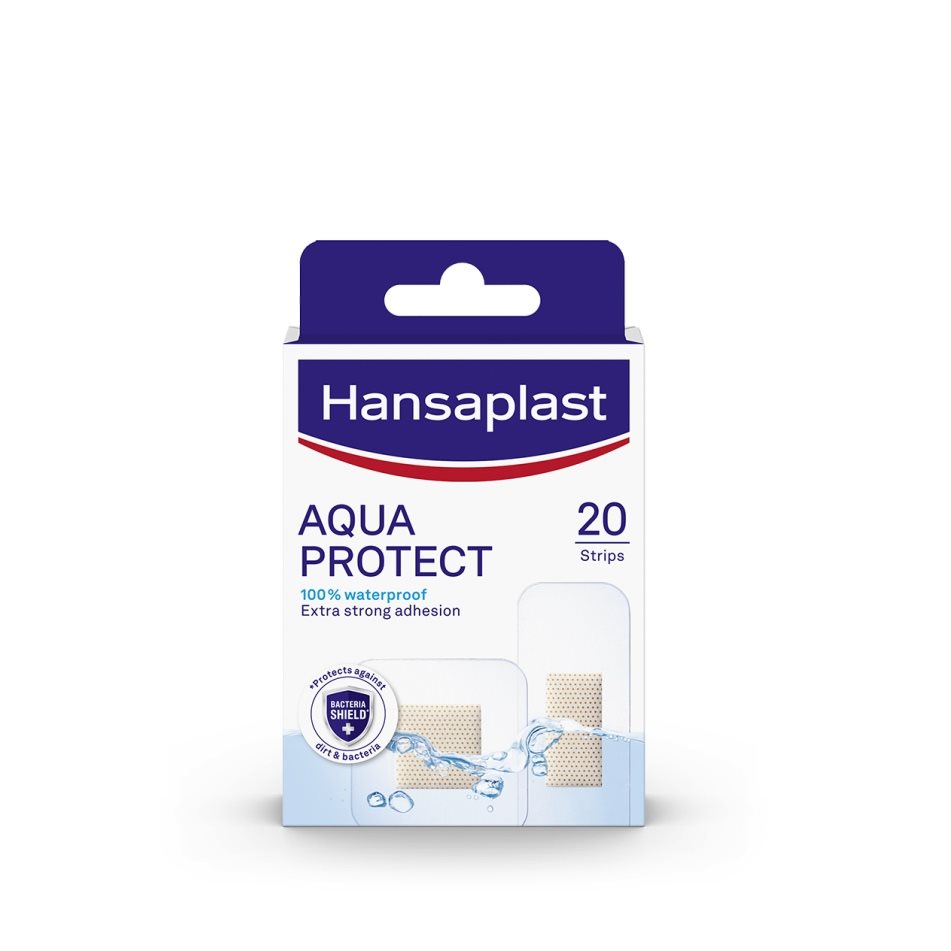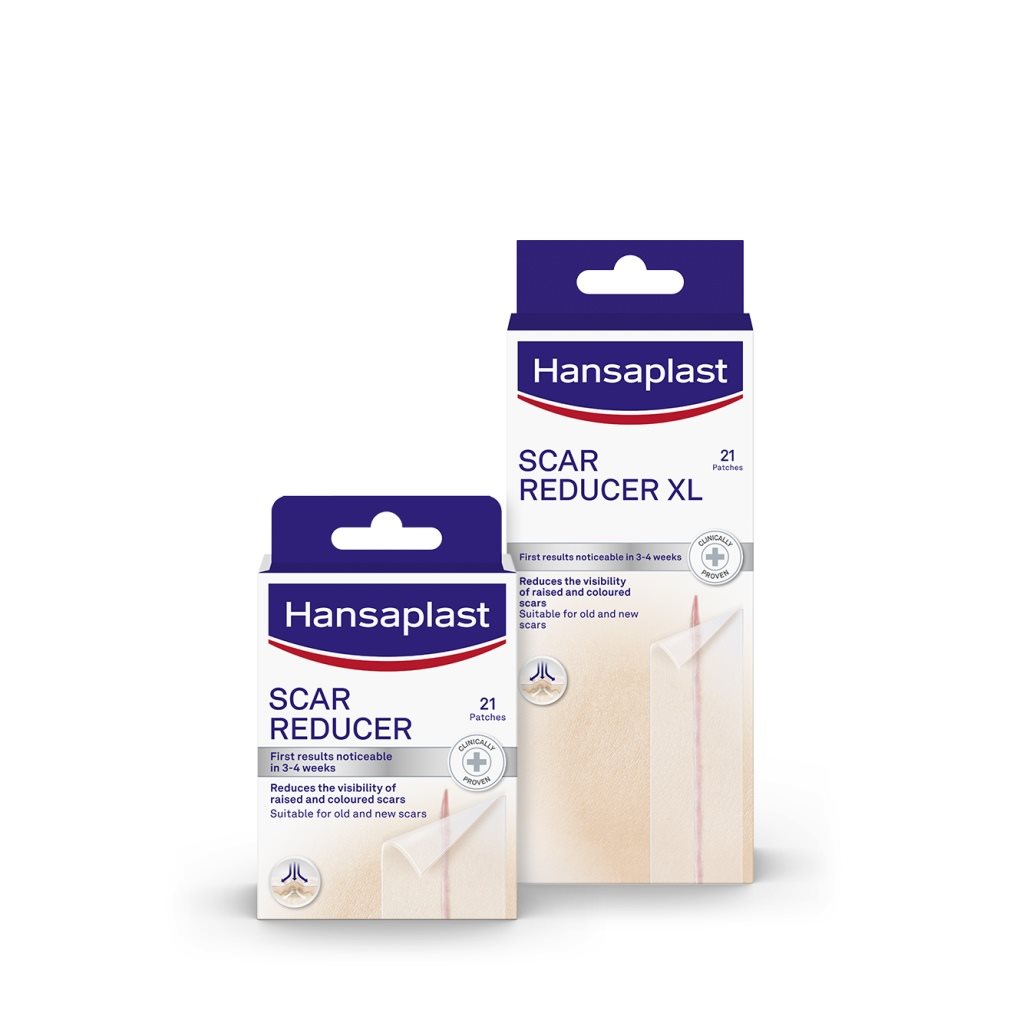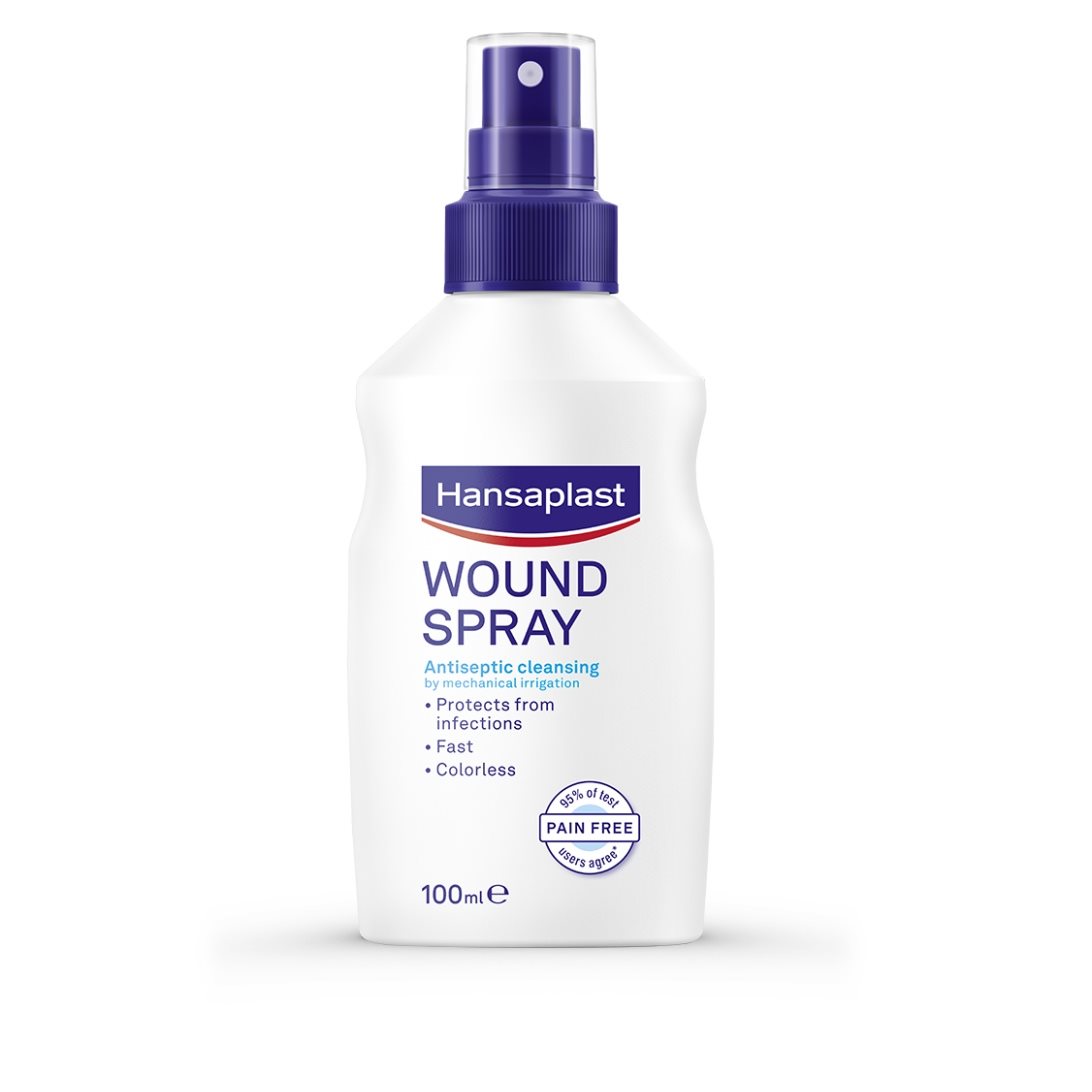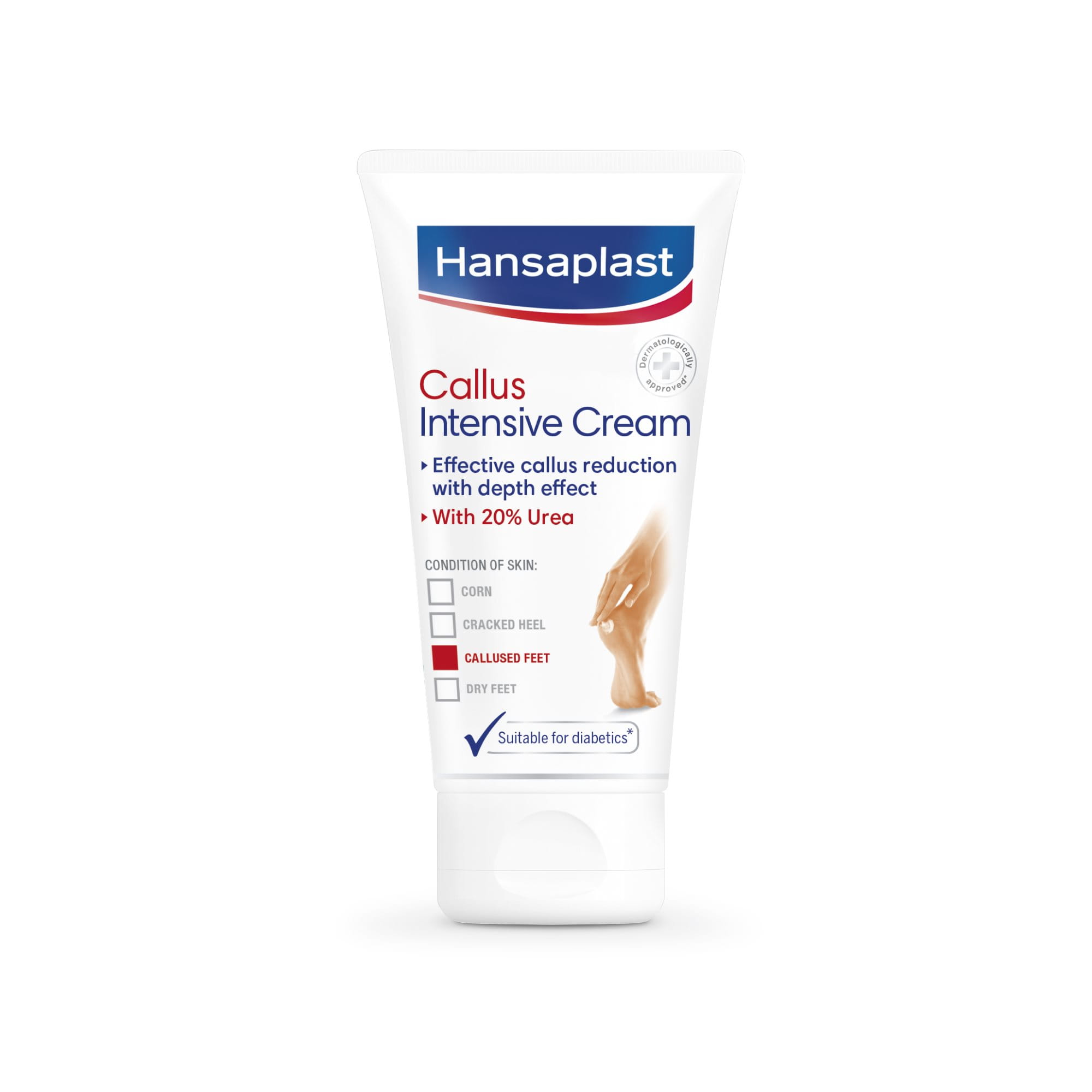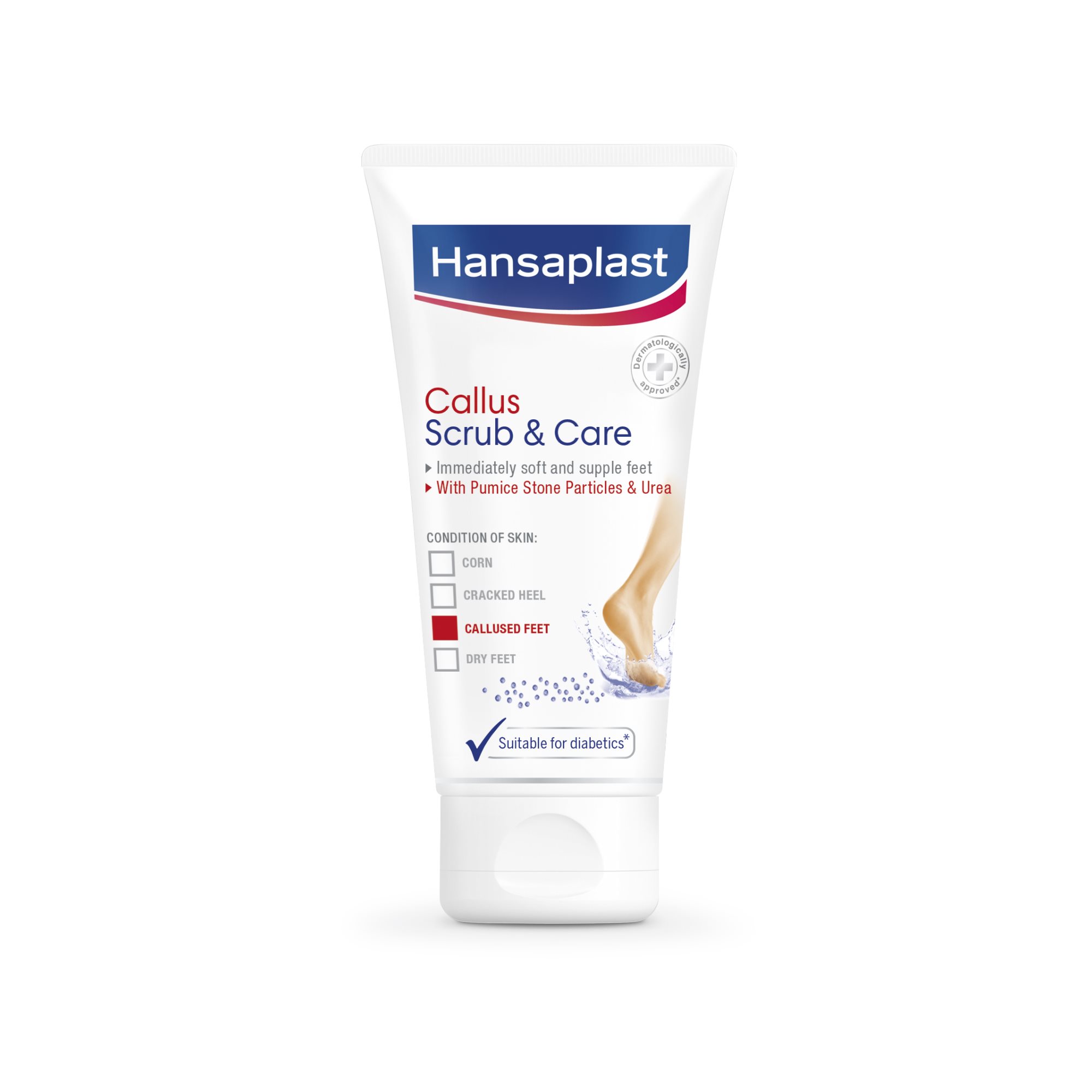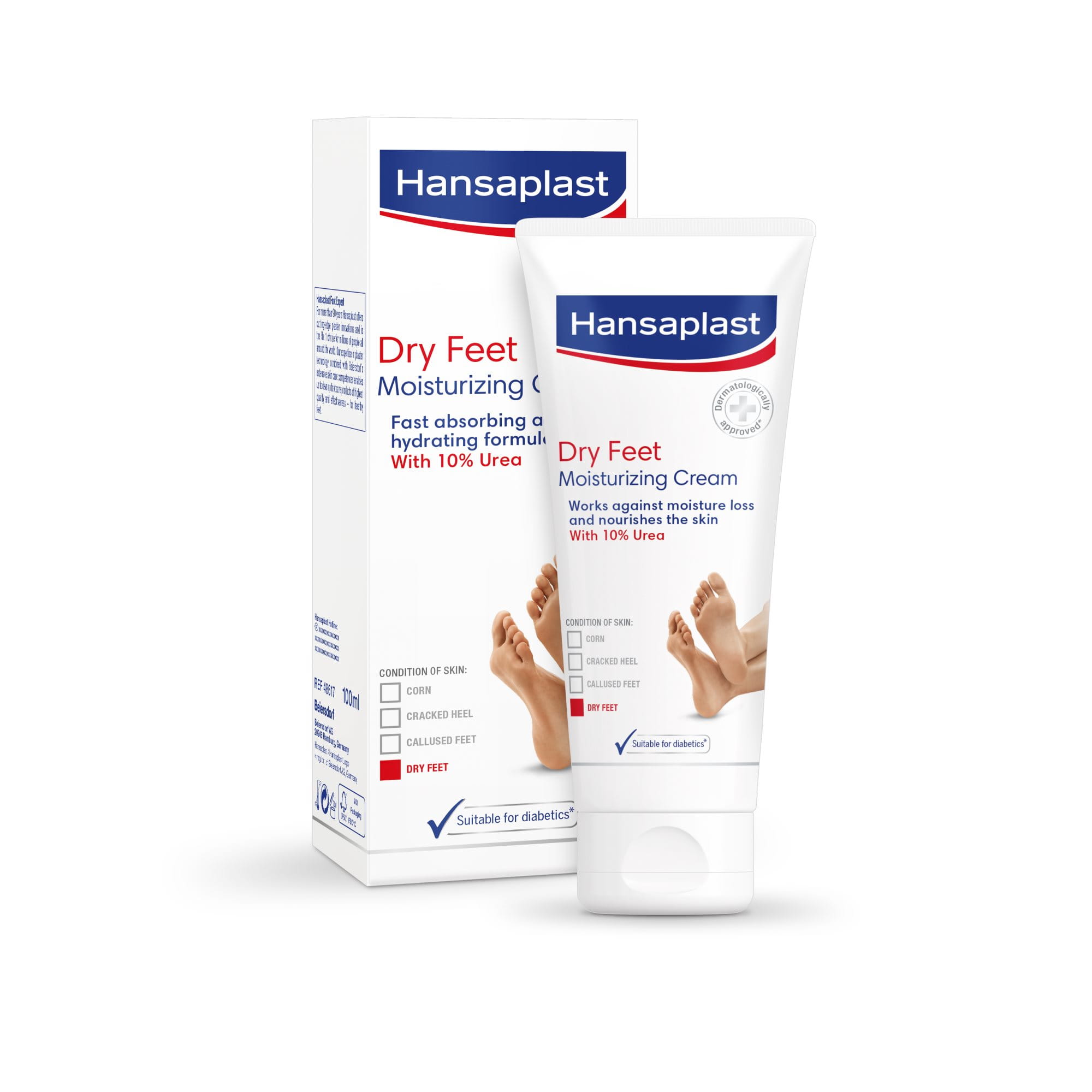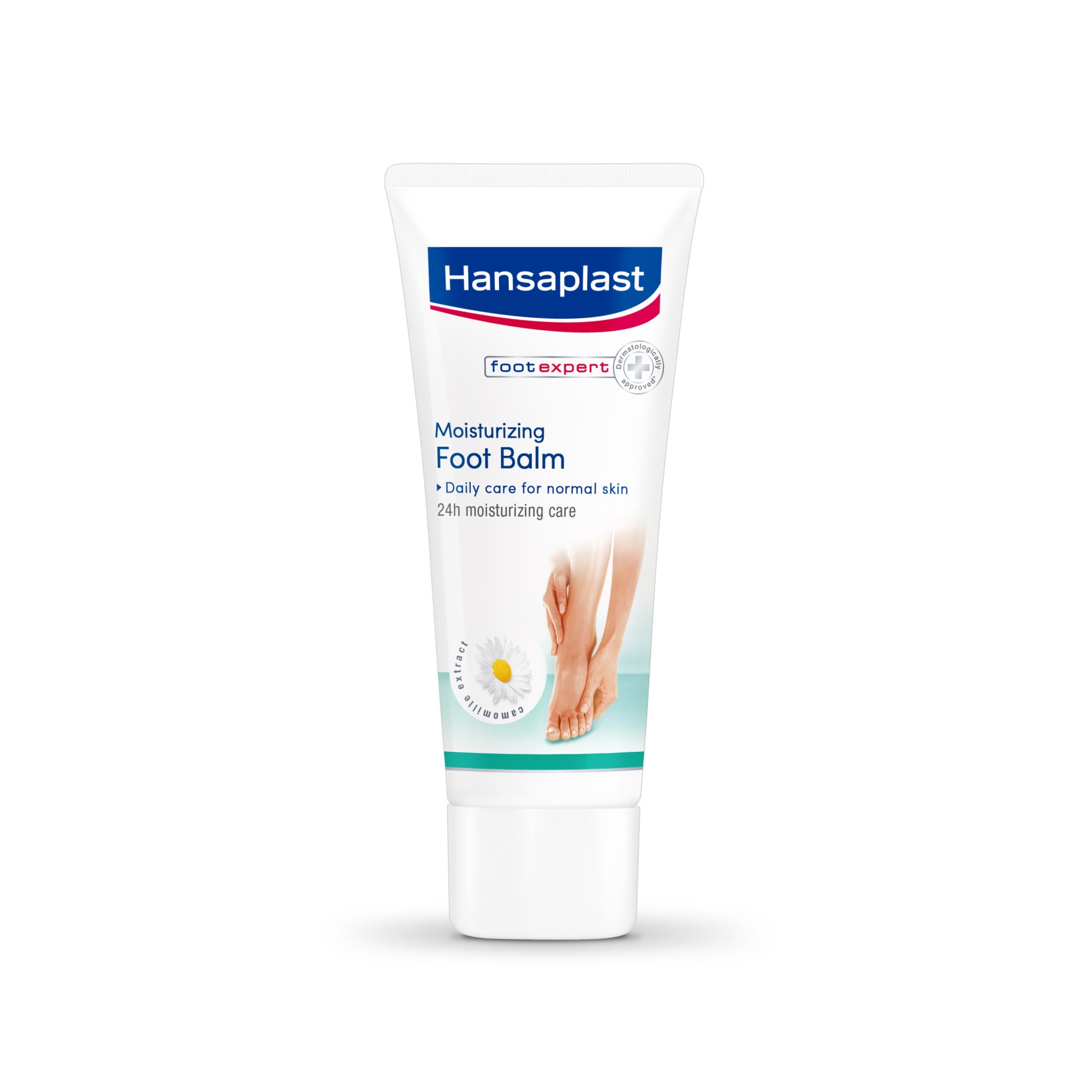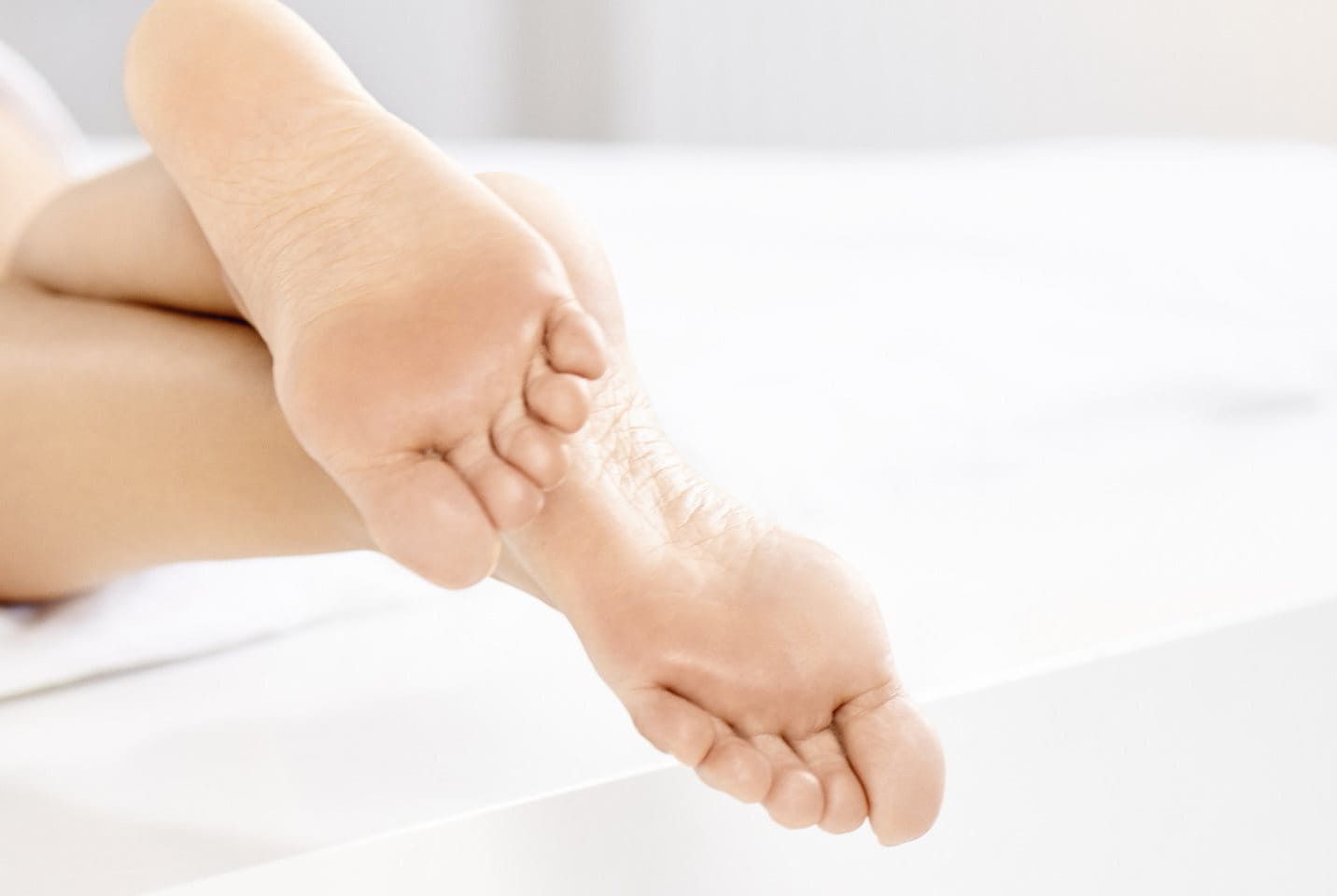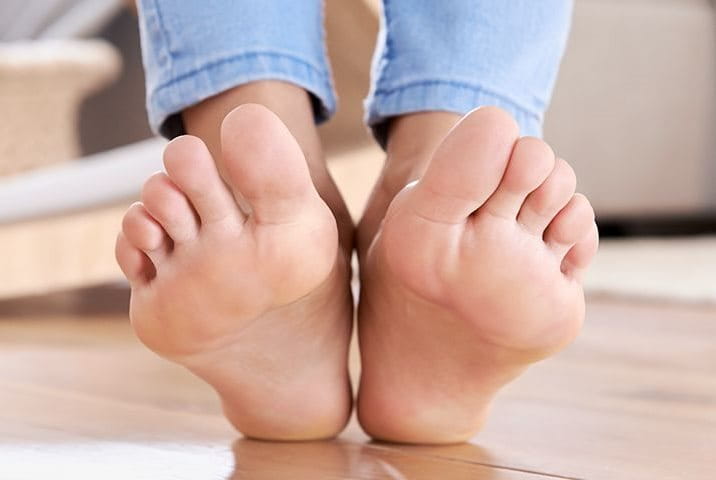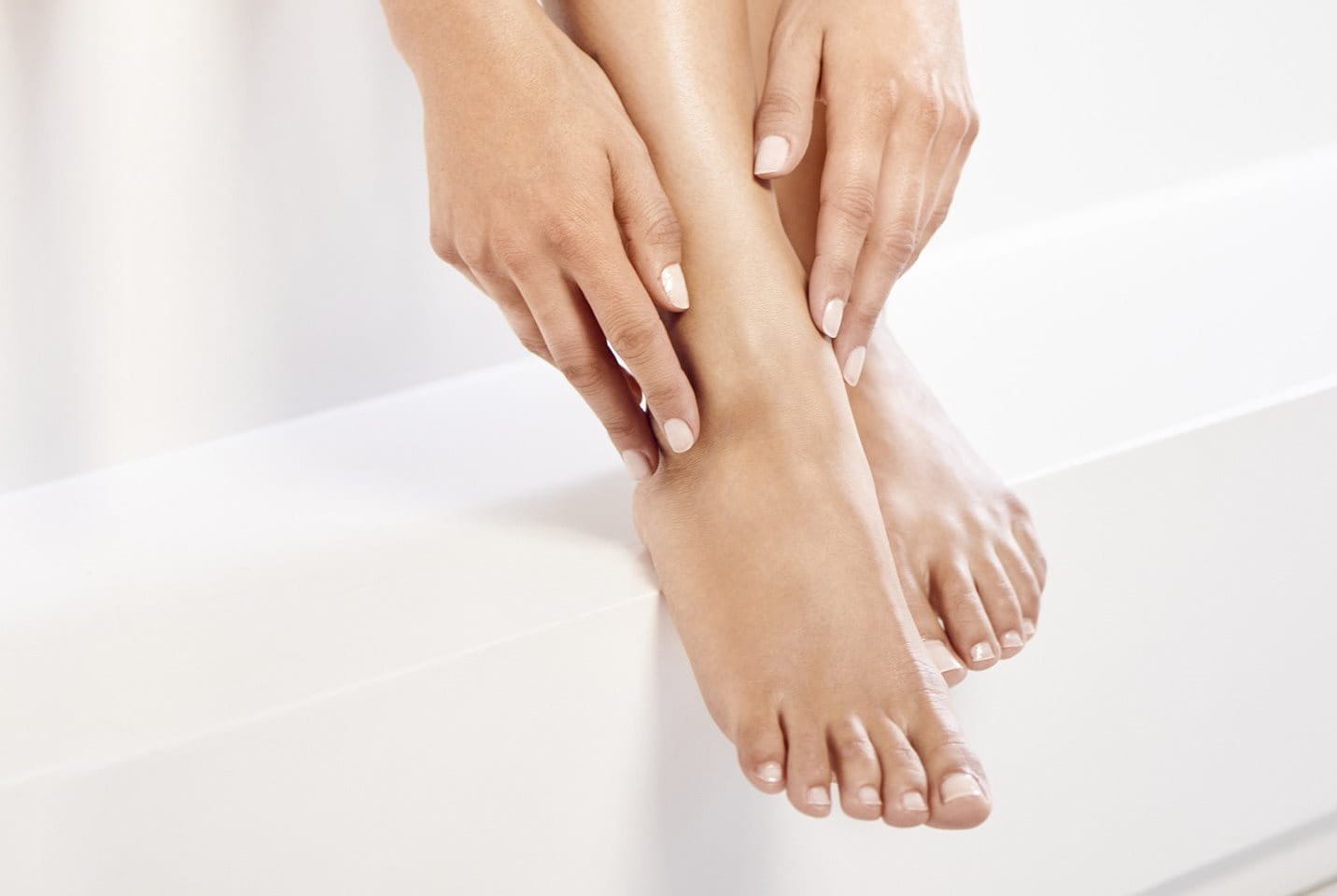Callus Plaster
Product Info
Callus Plaster
Designed to support the removal of callus or hardened skin, Hansaplast Callus Plaster offers advanced support thanks to its active ingredient salicylic acid. This ingredient is a keratolytic agent formulated to remove thick hornification (hyperkeratosis) such as calluses. The soft, skin-coloured tone of the plaster also provides coverage without drawing attention to the problem. And the cut-to-size dressings allow for the perfect amount of coverage each time – no matter how big or small the hardened area is.
If you have any questions about risks and side effects, please read the leaflet and ask your doctor or pharmacist.

Ingredients:
Contains wool wax, butylated hydroxytoluene, and Peru balsam.
How To Use
Application
When to use
For removal of callus or hardened skin
How to use
Cut the plaster to the desired size and shape, remove the foil and apply to clean, dry skin. Replace the plaster after 2 days. The softened skin can be removed after 4 days in a warm foot bath with either soap or salt. If the skin is especially hard, this process can be repeated.
Patients with diabetes should consult their doctor or pharmacist before use.
Packaging Size
Product Content
| Product | Type | Size | Quantity | ||||
|---|---|---|---|---|---|---|---|
| Product : | Callus Plaster | Type: |
|
Size: | 5 x 7,6 cm | Quantity: |
3 Pieces |
Frequently Asked Questions (6)
-
1. How does a callus develop?
A callus is an extended area of thickened skin mainly on the soles and heels of the feet. Calloused skin forms wherever the skin is exposed to pressure and friction over a longer period of time. The outer layer of the skin, the epidermis, reacts by building up and forming calloused skin in layers. -
2. Is too much callused skin harmful?
In most cases, calloused skin is painless. Once exposed to excessive and constant pressure, it can also get worse and crack. Little to moderate callus formation is nothing more than a cosmetic or aesthetic problem; especially when wearing open shoes. Yet thickening of the affected areas can lead to painful and inconvenient callus formation. -
3. How do I use a Hansaplast Callus Plaster?
The information below applies unless your doctor has prescribed alternative directions for using a Hansaplast Callus Plaster. Please adhere to the rules for application as the Callus Plaster cannot otherwise act properly. The affected skin area must be cleaned thoroughly with water and soap and dried beforehand. Then remove the protective paper from the piece of accordingly sized pre-cut plaster and place it upon the affected skin area. We recommend additional fixation (e.g. using surgical tape). Please make sure that only calloused skin is covered with the plaster. The adjacent healthy skin should be covered (e.g. using surgical tape). Please apply a new plaster after two days. In persistent cases the treatment should be repeated.
If you have any further questions on the risks and side effects, read the leaflet and ask your doctor or pharmacist. -
4. How does the salicylic acid in a Hansaplast Callus Plaster work?
The salicylic acid contained in a callus plaster softens the calloused skin. The cement like substances between the individual cells are dissolved, which, in turn, causes dissolution of the callus substance. In this way, salicylic acid softens the upper layer of the skin, which can absorb increased levels of humidity and starts to peel off. -
5. Can a Hansaplast Callus Plaster be used for babies and infants?
The Hansaplast Callus Plaster is not suitable for the treatment of babies and infants. Children should not use several plasters simultaneously over a longer period of time without medical advice. Usually, children are not affected by callus, as this is a typical medical condition affecting elderly people. It is therefore recommended that you consult a doctor for diagnosis to avoid confusion with other skin problems such as warts. If you have any further questions on the risks and side effects, read the leaflet and ask your doctor or pharmacist. -
6. How much salicylic acid is contained in a Hansaplast Callus Plaster?
A Hansaplast Callus Plaster contains 0.57 g salicylic acid.
